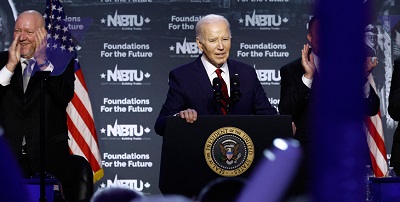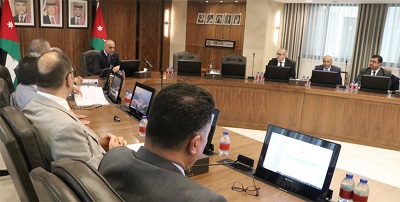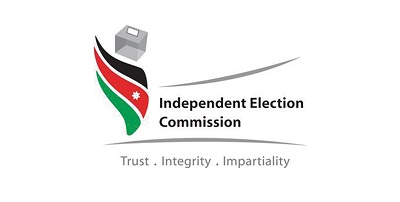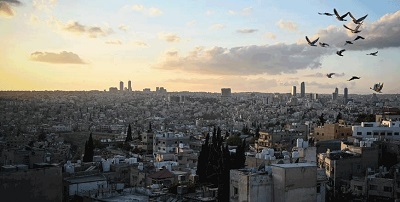US-Iran: 2018 to be model year for international relations? - By Eyad Abu Shakra, Asharq Al-Awsat.
I was listening, a few days ago, to an Iran political expert commentating on the Iranian popular uprising on an Arab satellite channel. When asked about the outcome he expected, he said “It may not bear fruits within six months, perhaps six years, but suppression only will not end popular discontent and opposition”.
I think this is quite logical, especially if one looks into the ‘psychology’ of despotism, and behavior of despots, as well as how ‘the disciples’ of the Tehran regime, its allies and henchmen act in every country the current Iranian ruling authority has succeeded in “exporting its revolution” to.
The great Syrian intellectual Abdul-Rahman al-Kawakibi (1855-1902) wrote in his book ‘Tabaa’e al-Istibdad wa Massare’ Al-Isti’bad’ (Manners of Despotism and Fatality of Enslavement): “A despotic government, is by nature, despotic from the top down; from the greatest despot, to the policeman, helper, street cleaner.
ALSO READ: Iran’s catastrophes loom large
All these will always be the vilest in his class because vile scum care not about dignity and honor, since their only interest is to prove to their master that they are a mere copy of him, and obedient followers of his rule…”.
In this sense, a phenomenon made up of ‘the culture of death’, backwardness, extremism and exclusion, does not disappear easily. It will not be decisively defeated except by a conceptual revolution that requires time to gather momentum, and a profound understanding of its danger by the international community when it deals with it.
Not a simple phenomenon
Thus, Iran’s ‘Khomeinist Revolution’ which shook the Middle East in 1979 was not a simple phenomenon, for the following reasons:
1- It took place in Iran, one of the Middle East’s most important, most populous, largest, and culturally rich countries.
2- Iran is an oil-producing country that enjoys huge economic potential, and great and glorious industrial, artisanal and cultural base.
3- Iran occupies a strategic location surrounded by the Arab world, Turkey, the Indian sub-continent and the former Soviet republics of the Caucasus and Central Asia.
4- Iran has nurtured imperialist ambition since early history, and during the ‘Cold War’ was along with Turkey and Pakistan member of the West’s ‘containment belts’ against the expansion of Soviet Communism.
5- Iran is the most populous Muslim country where Sunni Islam is a minority; a fact that has become exceptionally important as the Western powers have ascribed ‘Islamic Terrorism’ exclusively to Sunni radicalism but not Shi’ite radicalism. This discrimination has allowed the Iranian leadership to present itself to the Western governments as a ‘partner’ in the ‘War on Terror’, and now seems to have been taken on board.
6- Iran has been through the centuries a country with a glorious ‘institutional’ history. Since the early years of the Abbasid caliphate (750 AD – 1258 AD), Iranians not only helped create collective cultural, artisanal and professional ‘guilds’, but these very ‘guilds’ became incubators for some of the most influential intellectual and philosophical currents in the history of Islam and the Middle East.
They also, throughout the centuries, developed civic and sectarian institutions, and militaristic and quasi-militaristic movements in the regions the vestiges of which one may see today in Iran’s (IRGC) Revolutionary Guard’s cobweb of ventures and investment ‘tentacles’ (legal and illegal) in almost every field.
IRGC’s militias
These activities are copied and carried out also by the IRGC’s militias in Lebanon, Iraq and Yemen where they, thanks to their relatively sophisticated organization, have been gaining the upper hand against their off-handed, individualistic and disorganized opponents.
These factors put together have ensured the longevity of a regime that since 1979 has mastered persecuting its intellectuals and opponents, driving them either to exile or gallows and prison cells.
Indeed, infighting in the Khomeinist Revolution began few months into its success. Shining lights among its politicians and clergy, such as Mehdi Bazargan, Abolhassan Banisadr, Sadegh Ghotbzadeh (eventually executed), Ayatollah Kazem Shariatmadari, Ayatollah Mahmoud Taleghani, and later Ayatollah Hussein Ali Muntazeri, Mir Hussein Mousavi and Mehdi Karroubi were, gradually, either marginalized, or ostracized. Gradually, too, the regime metamorphosed into a security – business structure, whereby the IRGC became its core, face and raison d'être.
ALSO READ: Reza Pahlavi: The Iranians message is clear, change the regime
However outside Iran, during the early years of the ‘Revolution’, it gained thousands of intellectual and idealistic admirers from Arab countries and the rest of the world. Those were enchanted by its revolutionary slogans inspiring the ‘downtrodden’ to rise, and its courageous discourse in standing up to injustice, imperialism and ‘forces of arrogance’.
Many liberal and leftist prominent personalities from all over the world regarded Iran’s successful revolutionary experiment as the Soviet example was showing signs of debility and old age, and the Maoist alternative was moving towards pragmatism.
In the UN Security Council debate on Iran, that kind of utopian ‘innocence’ could be heard, namely from Bolivia’s ambassador. However, not all the speeches that opposed any effective action against the Tehran regime were as ‘innocent’ as Bolivia’s stance, which was representative of the historical anti – Yankee culture of the Latin America’s left.
Russia and China
In reality, several motives were expressed during that debate. Russia and China, the two aspiring ‘superpowers’ challenging America’s supremacy, had their own considerations in confronting Washington and exploiting its miscalculations. These considerations have been obvious in Moscow’s and Beijing’s open support of Al-Assad regime in Syria, and tacit approval of North Korea’s nuclear threat to Washington and its Asian allies.
Then there were what one might call the opportunistic international positions, especially from some major European member states which have big investments and business relations with Iran. These nations are keen that the Tehran regime survives in order to protect its investments in a country where they are actually competitors not allies of America.
ALSO READ: At least 8,000 people have been detained during Iran protests
A third group of UNSC member states includes the ‘purists’ who are inclined to uphold the classical interpretation of the Council’s role: i.e. that it should only interfere in international conflicts or major conflicts that may cross national borders. Thus, these members do not see that internal upheavals are the Council business.
Last but not least, there UNSC member states which are traditionally critical of US foreign policy, more so under the present Donald Trump administration; which is popular even with some of Washington’s traditional old allies.
Based on the above, one would assume that when Washington decided to confront Tehran’s mullahs in the Security Council, it was well aware of the unfavorable mood against it; especially, following the White House’s disregard to the Council resolutions by recognizing Jerusalem as Israel’s capital.
In short, welcome to International Relations ‘2018 Model Year’.
Latest News
 'Sinwar Above Ground': Hamas official's revelation shocks Israeli Occupation
'Sinwar Above Ground': Hamas official's revelation shocks Israeli Occupation US president signs bill to provide new aid for Ukraine
US president signs bill to provide new aid for Ukraine Prime minister directs government to support IEC ahead of upcoming elections
Prime minister directs government to support IEC ahead of upcoming elections Parliamentary elections for 20th Lower House to be held on September 10 – IEC
Parliamentary elections for 20th Lower House to be held on September 10 – IEC Amman Chamber of Commerce says GDP grows by 4.4% in 2023
Amman Chamber of Commerce says GDP grows by 4.4% in 2023
Most Read Articles
- More than 100 arrested at US university pro-Palestinian protests
- Irish foreign minister visits Palestinian refugee camp in Amman, vows support to UNRWA
- King, French president discuss regional developments
- Senior Hamas official says movement is “awaiting response” in ceasefire negotiations
- Jordan remembers Queen Zein
- Ahead of feared Rafah invasion, Palestinians mourn bombardment dead
- US says downed Houthi anti-ship missile, four drones
- JAF carries out six more airdrops of aid into Gaza
- Cassation Court upholds over 3-year sentence for drug dealer
- Jordan completes human rights review before council’s evaluation Jordan completes human rights review before council’s evaluation